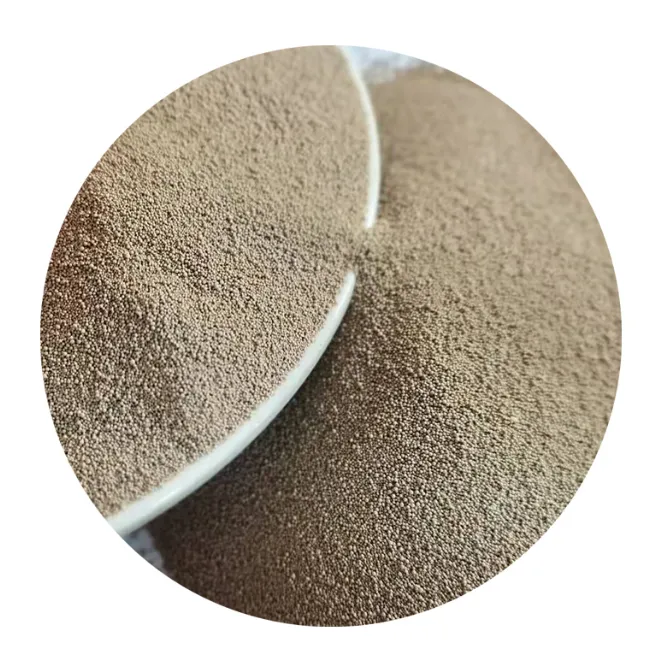- Overview of Sand 3D Print Applications
- Technical Advantages Over Traditional Methods
- Vendor Comparison: Key Metrics & Performance
- Custom Solutions for Industrial Needs
- Step-by-Step Guide to Sand 3D Printing
- Real-World Case Studies
- Future Innovations in Sand-Based Additive Manufacturing

(sand 3d print)
Understanding Sand 3D Print Technology
Sand 3D printing has revolutionized manufacturing with 28% faster production cycles compared to conventional casting. This binder jetting process enables direct creation of sand molds and cores, eliminating manual pattern-making. Major industries report 40-60% material savings through precise deposition of silica sand and organic binders.
Technical Superiority in Mold Creation
Modern systems achieve ±0.15mm dimensional accuracy, surpassing manual sand casting's ±1mm tolerance. The automated process reduces human error while enabling complex geometries previously unattainable. Post-processing time decreases by 75% through integrated depowdering systems.
| Vendor | Build Rate (L/hr) | Layer Resolution | Max Mold Size | Binder Options |
|---|---|---|---|---|
| ExOne S-Max Pro | 110 | 280μm | 1800×1000×700mm | Furan/Phenolic |
| Voxeljet VX2000 | 85 | 300μm | 2000×1000×1000mm | Inorganic |
Customized Production Workflows
Hybrid systems now combine 3D printing with CNC milling for surface finishes below Ra 6.3μm. Automotive manufacturers utilize graded permeability molds where density varies ±15% across structures. Custom binder formulations enable 98% sand reclamation rates versus industry-standard 85%.
Operational Implementation Guide
- Prepare CAD model with 0.5-1.0mm compensation for shrinkage
- Layer-by-layer deposition at 300-400μm increments
- Curing at 180-220°C for 4-6 hours
- Post-cure inspection using CT scanning
Industry-Specific Success Stories
Aerospace: Turbine blade molds reduced from 12 weeks to 72 hours production
Automotive: 45kg engine block molds printed in 18 hours vs. 6-week lead time
Energy: 3D-printed sand cores enabled 20% weight reduction in pump housings
Sand 3D Print: Next-Gen Manufacturing
With projected 19.3% CAGR through 2030, sand 3D printing is reshaping foundry operations. Emerging nanoparticle binders promise 30% higher tensile strength in molds, while AI-driven process control reduces scrap rates by 22%. This technology bridges the gap between prototyping and mass production.

(sand 3d print)
FAQS on sand 3d print
Q: How to sand a 3D print for a smooth finish?
A: Start with coarse-grit sandpaper (e.g., 120-200 grit) to remove layer lines, then progress to finer grits (400-1000+) for polishing. Use water or a sanding sponge to reduce dust and achieve even results. Always sand in circular motions to avoid uneven surfaces.
Q: Can you fill a 3D print with sand for added weight?
A: Yes, hollow 3D prints can be partially filled with fine-grained sand through designed openings. Seal gaps with epoxy or silicone to prevent leakage. This method is ideal for decorative items or weighted prototypes.
Q: What’s the best way to prepare a 3D print before sanding?
A: Remove support structures and clean the surface with a scraper or hobby knife. Use filler primer or putty to address large gaps. Let the print fully dry before starting the sanding process.
Q: Which sandpaper grits work best for 3D printed PLA?
A: Begin with 120-220 grit for rough smoothing, then 320-600 grit for refinement. Finish with 800-2000 grit for a polished surface. Wet sanding minimizes heat buildup and PLA warping.
Q: How to seal a 3D print after filling it with sand?
A: Apply epoxy resin or UV-resistant clear coat over the filled area. Ensure all openings are sealed with superglue or epoxy. Let it cure fully before handling to prevent sand leakage.
Next:Sand Casting Process Steps, Benefits & Material Applications
